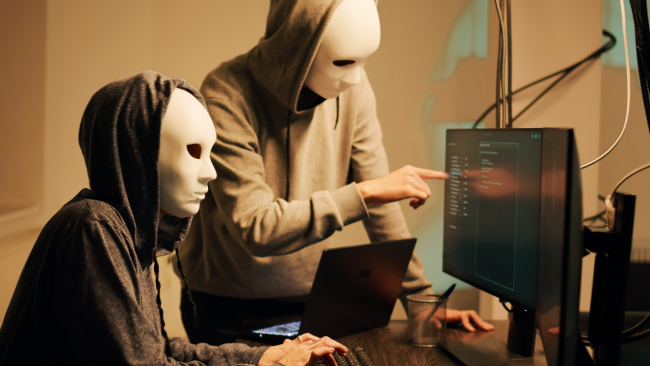Research risk: we’ll know it when we see it

Individuals of a military mind-set have undoubtedly taken an interest in science and innovation since the first humans learned how to make stone edges lethally sharp. Perhaps the earliest documented account of such attention can be found in enthusiastic descriptions of creative war machines inspired by Archimedes’ invention of the lever. Galileo, for all the trouble he had with the Church, became a fast friend of military planners, who welcomed his military compass as a way of mathematically calculating the location of enemy cannons on the battlefield.
Canada has followed in this tradition, however often the virtue of peacekeepers is hailed. The National Research Council actively engaged in military R&D during World War II, testing poison gas in Alberta and indulging British military planners to the point of turning Lake Louise into a test-bed for transforming North Atlantic icebergs into makeshift landing strips. Members of the academic community were later lured into similar adventures, as Cold War priorities lavished millions of dollars in research funding on universities and other research institutions willing to undertake defence work.
By the 21st century, however, we had apparently come to our senses, firmly rejecting any role in U.S. plans to beef up North American defence against missiles headed our way. In reality there was still a lot of military research continuing in government departments and private firms, but many academics celebrated the freedom to side-step this kind of work and avoid the taint of seeing their research turned into weapons or worse.
Or so they might think. A recent statement from Innovation, Science and Economic Development Canada (ISED) put recipients of research funding from the three federal granting councils on notice: pick the wrong topic, or the wrong partner, and you will get no money.
If anyone was caught off-guard by this blunt announcement, they should not have been. More than three years ago, ISED issued detailed guidelines to help academic investigators assess economic or geopolitical risks that might be associated with their projects. Drafted in collaboration with Universities Canada and the U15 group of research universities, the document flags warning signs, such as offers of funding or travel with no clear purpose, requests to avoid reporting certain activities, or pricing of services that seems too good to be true.
Such common sense cautions appear to be all too obvious, but they remind people in key areas that their findings may be susceptible to “dual use”. In other words, what looks like pure science may in fact have commercial or military applications, even if individual investigators are not interested or even aware of that possibility. The flurry of work in the 1930s around radioactive materials made for some of the most exciting science in history, but others watching it already had visions of weaponry dancing in their imaginations.
The same holds true today, as breakthroughs in quantum computing, artificial intelligence, or genetic manipulation become fodder for the feasibility of socially unpalatable uses, thanks to contributions from Canadian academics. The implication is that these are supposed to be smart people, more than able to sort out such conundrums; but as with all things in life, tempting circumstances can place any of us in challenging situations. Just as, for example, several Canadian universities found themselves near the head of a list assembled by the Australian Strategic Policy Institute, as institutions that had conducted and published extensive research with Chinese partners directly associated with that country’s military.
Such collaborations, in and of themselves, are not evidence of nefarious intent. University administrators have regularly cited academic freedom, the right of those same smart people to make their own well-informed choices. Nor has that freedom been curtailed by ISED, which addressed only public money awarded for research, and would presumably allow individuals to team up with Satan himself, if the dark lord offered to pay the way.
Nevertheless, the government remains conveniently vague on just what kind of risks will terminate an individual’s funding, or how those risks will be evaluated. It even remains unclear if there is any kind of unstated, working definition of what kind of research will get you in trouble, or whether, as the famous definition of pornography goes, we will simply know it when we see it.
Until such points are clarified, or someone’s research grant is pulled, ISED’s proclamation serves as a very uncomfortable form of moral suasion. It is even possible that the people who framed this announcement are themselves a bit unclear about just what they would find unacceptable. We are left only with an unsettling sense that our world — defined by intense digital integration, constant surveillance, and economic competition — poses hazards for even in the most innocent of innovation exercises. That, too, may be common sense, but now we have yet another reminder to make it even more common.
R$
| Organizations: | |
| People: |
Archimedes and Galileo
|
| Topics: |
Events For Leaders in
Science, Tech, Innovation, and Policy
Discuss and learn from those in the know at our virtual and in-person events.
See Upcoming Events
You have 0 free articles remaining.
Don't miss out - start your free trial today.
Start your FREE trial Already a member? Log in
By using this website, you agree to our use of cookies. We use cookies to provide you with a great experience and to help our website run effectively in accordance with our Privacy Policy and Terms of Service.





